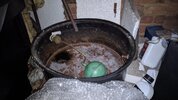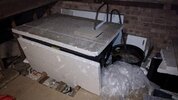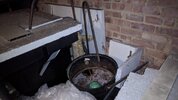- Joined
- 4 Sep 2022
- Messages
- 6
- Reaction score
- 0
- Country

Hi all,
Just wondering if someone can help me identify this water tank / container, and let me know how I should be maintaining it.
It sits alongside my main water tank, and, as can be seen from the attached images, it's quite dirty. The overflow pipe leads out the back of the house, but hasn't been overflowing at all.
It was suggested to me by a neighbour (who didn't see it) that it might be related to my heating system, the radiators and such.
To me, it looks like I should be bailing out some of the dirty water and filling it with fresh water. Or maybe just bailing out the dirty water altogether.
Any help and advice would be appreciated.
Just wondering if someone can help me identify this water tank / container, and let me know how I should be maintaining it.
It sits alongside my main water tank, and, as can be seen from the attached images, it's quite dirty. The overflow pipe leads out the back of the house, but hasn't been overflowing at all.
It was suggested to me by a neighbour (who didn't see it) that it might be related to my heating system, the radiators and such.
To me, it looks like I should be bailing out some of the dirty water and filling it with fresh water. Or maybe just bailing out the dirty water altogether.
Any help and advice would be appreciated.



